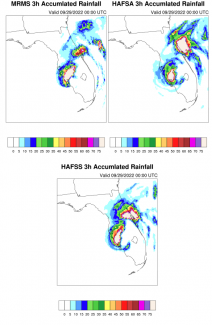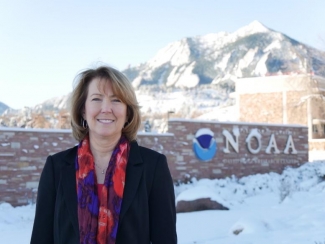The DTC serves a vital role in advancing NOAA’s modeling efforts and the community-based Unified Forecasting System (UFS). The DTC is research to operations (R20) and operations to research (O2R) in action. Through model evaluations and support to the community, the impact of the DTC in the delivery of new models and techniques to operations and the community has been profound. I would like to highlight a few achievements here.
First, the partnerships cultivated through the DTC are far reaching and have been highly successful in connecting the weather community with the operational prediction community. The DTC Visitor Program is an excellent example of this successful collaboration.
Secondly, the DTC is fostering significant scientific improvements in NOAA’s operational models. For instance, the DTC contributed foundational infrastructure to the Short-Range Weather (SRW) Application, which is providing the foundation for the Rapid Refresh Forecast System (RRFS), NOAA’s newest community-base model soon headed for operational implementation in 2024. In order to engage the weather community in the development of the RRFS, the DTC spearheaded the development of code management protocols and a user workflow, which were adopted by the Earth Prediction Innovation Center (EPIC) and provided to the research community. These technologies are being used to accelerate RRFS development toward the finish line.
In another example, the DTC was instrumental in preparing the Hurricane Analysis and Forecast System (HAFS) for operational implementation, which is scheduled for operations in the 2023 hurricane season. Using process-based diagnostics to explore model performance, the DTC staff provided information that improved the representation of physical processes in HAFS and provided insight for advancing forecast skill. The figure below highlights one of the comparisons performed in the study.
The DTC is facilitating improvements in FAA operational weather products. In one example, the DTC staff evaluated the use of the hybrid sigma-pressure coordinate in the Rapid Refresh (RAP) and the High-Resolution Rapid Refresh (HRRR) operational models. Based on their analyses, spurious noise in complex terrain within the models was reduced resulting in a more coherent mountain wave feature. By improving these mountain wave features, improvements in turbulence forecasts produced by NWS serving aviation operational decisions were realized (Beck et. al, 2020: An Evaluation of Hybrid, Terrain-Following Vertical Coordinate in the WRF-based RAP and HRRR models).
Tools and technologies are also developed by the DTC staff. For instance, the popular Common Community Physics Package (CCPP) was designed and developed to facilitate the implementation and transition of physics innovations into NOAA’s atmospheric operational models. Moreover, the tool has become a core component to all UFS applications and has been released to the community for advancing numerical model research; it is on track for transition to NWS as part of the HAFS system; and the CCPP is undergoing pre-operational testing at the Naval Research Laboratory.
The future of the DTC is bright. With the renewed emphasis on testing and evaluation of model improvements, innovations into NOAA’s models are sure to accelerate.
Acknowledgement: I would like to thank Jeff Beck, Linlin Pan, Man Zhang, and Ligia Bernardet for their helpful input.

